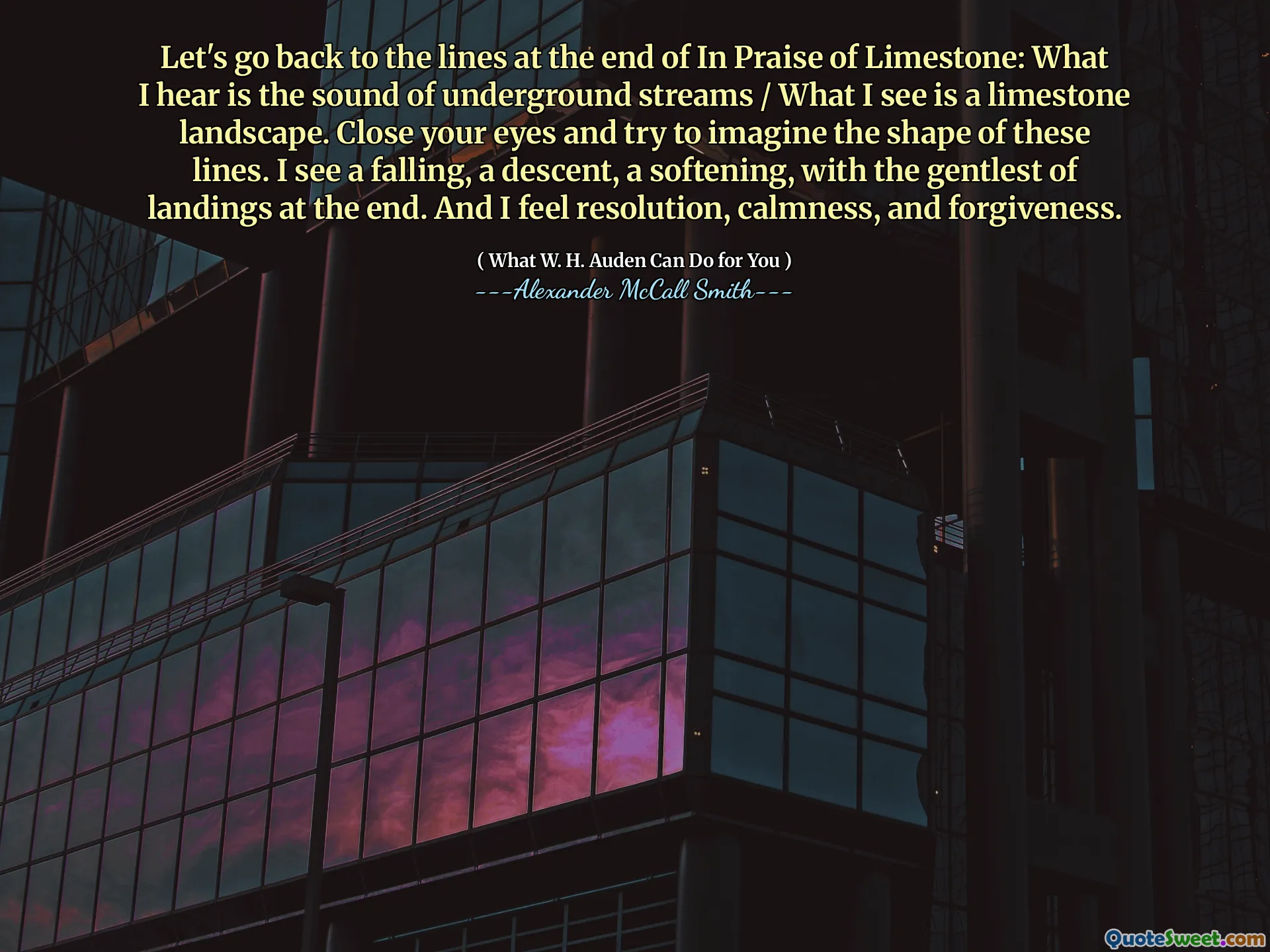
让我们回到赞美石灰石结束时的台词:我听到的是地下溪流的声音 /我看到的是石灰石景观。闭上眼睛,尝试想象这些线条的形状。我看到一个跌倒,下降,软化,最后是最柔和的着陆点。我感到解决,平静和宽恕。
(Let's go back to the lines at the end of In Praise of Limestone: What I hear is the sound of underground streams / What I see is a limestone landscape. Close your eyes and try to imagine the shape of these lines. I see a falling, a descent, a softening, with the gentlest of landings at the end. And I feel resolution, calmness, and forgiveness.)
在亚历山大·麦考尔·史密斯(Alexander McCall Smith)对W. H. Auden的反思中,他提请注意Auden诗歌“赞美石灰石”的结论。这些台词唤起了一个生动的图像,将听觉和视觉元素结合在一起,鼓励读者参与他们的想象力。麦考尔·史密斯(McCall Smith)将这一图像解释为将柔和的下降或下降到宁静的景观中,暗示了宁静和接受的时刻。
奥登的话创造的气氛与平静和解决的感觉产生了共鸣。麦考尔·史密斯(McCall Smith)强调了这些元素如何促进宽恕与和平的感觉,这说明了诗歌可以传达的情感深度。对这种简单而深刻的图像的探索邀请读者反思自己通过自然和艺术的慰藉和理解的经历。











